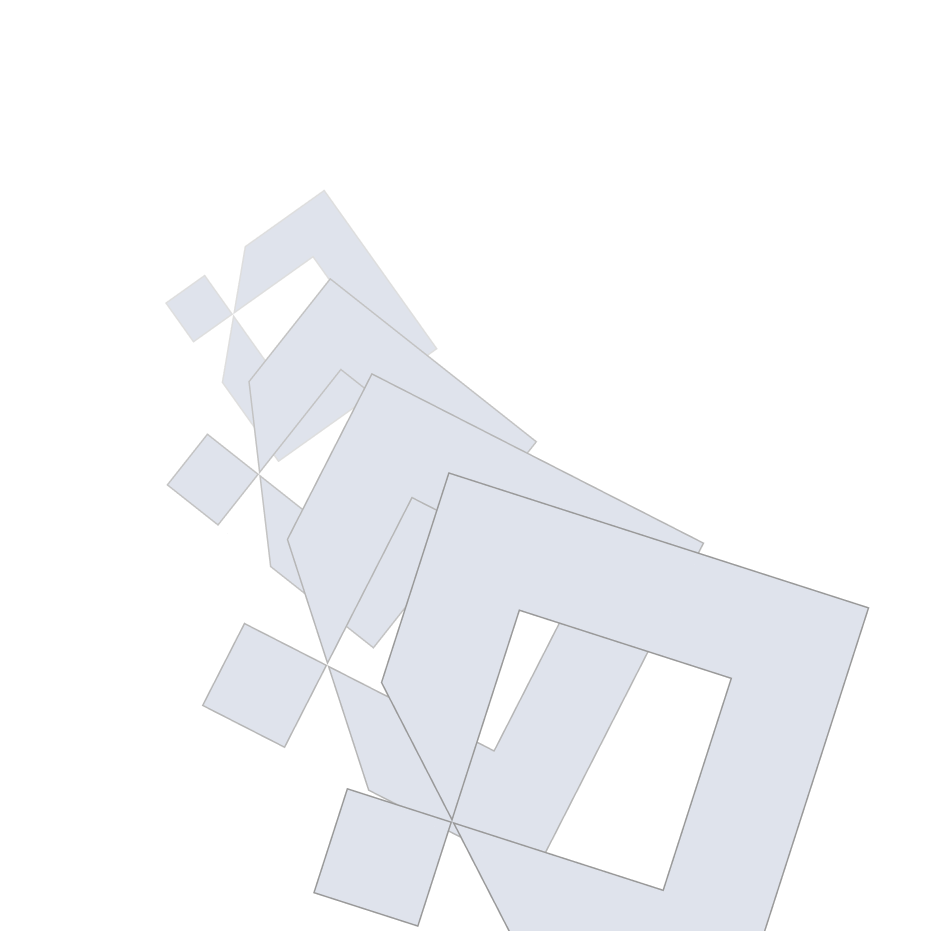

ZES DCDC is a synchronous step-down regulator that can deliver a current of up to 3A, with a high switching frequency of typically 2 MHz, allowing the use of small inductors. By leveraging ZES patented control, can achieve a high power-efficiency at both heavy and light loads and meanwhile provide a fast load transient response as well as high output voltage accuracy.
It is based on a patented a Double Hysteretic Control (DHC) which embodies both a Voltage-Mode Hysteretic Controller (VMHC) and Current-Mode Hysteretic Controller (CMHC). Under light load condition, the converter operates in Discontinuous-Conduction-Mode (DCM) and accurate output voltage regulation is achieved by VMHC only. Hence inherent stability is guaranteed. Under heavy load condition, the converter enters in Continuous-Conduction-Mode (CCM). In addition to the voltage regulation by VMHC, the peak and valley current of the inductor are regulated by CMHC. CMHC is a linear loop whose stability is assured by an on-chip compensation network.
There are two salient advantages of DHC control. The first advantage is that the buck converter can operate in both DCM and CCM and thus provide excellent efficiency at both light and heavy loads. The second advantage is that the bandwidth of the proposed control achieves a much higher bandwidth as compared to conventional designs. This increase in bandwidth lead to on-time extension when a fast transient is encountered, therefore reducing voltage undershoots/overshoots as well as their recovery time.
| Part Number |
|
Package | Datasheet | |||||||
|---|---|---|---|---|---|---|---|---|---|---|
| ZES501 |
|
48-pin QFN48L (6 × 6 mm) | Contact ZES | |||||||
| ZES502 |
|
48-pin QFN48L (6 × 6 mm) | Contact ZES | |||||||
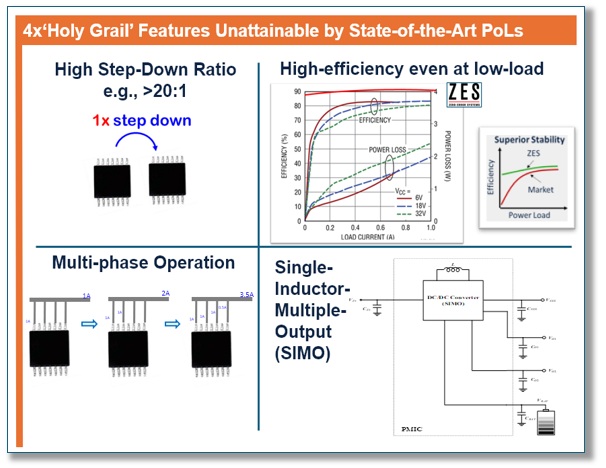
Typical Application Circuit (VIN=5V, VOUT=2.5V)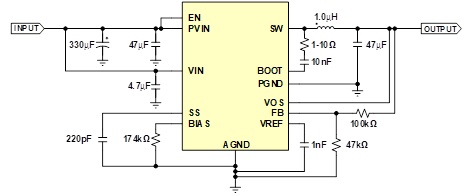
|
Functional Block Diagram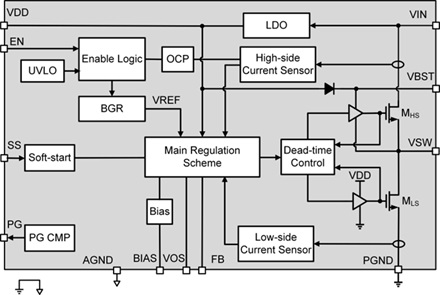
|
ZES DCDC lineup offers products to suit input power rails for 5V and 12V:
|
(1) ZES501: Vin= 2.5V to 5V, Adjustable Vout=0.8V and VIN-0.8V, Iout=3A
With its wide operating input voltage range of 2.5V to 5V, the device is ideally suited for systems powered from either a Li-Ion or other batteries. It supports up to 3A continuous output current at output voltages between 0.8V and VIN-0.8V (with 100% duty cycle mode). The output voltage start-up ramp is controlled by the soft-start pin, which allows operation as either a stand-alone power supply or in tracking configurations. Power sequencing is also possible by configuring the Enable and open-drain Power Good pins. In power save mode, the devices draw quiescent current of approximately 15µA from VIN. Power save mode, entered automatically and seamlessly if the load is small, maintains high efficiency over the entire load range. In shutdown mode, the device is turned off and shutdown current consumption is less than 1µA. The device is packaged in a 48-pin QFN48L (6 mm × 6 mm). |
ZES501: Efficiency vs Load Current 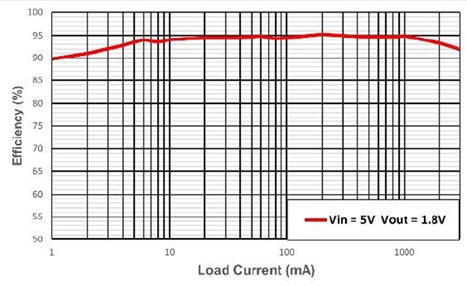
|
|
(2) ZES502: Vin= 3V to 17V, Adjustable Vout=0.8V to 7V, Iout=3A
With its wide operating input voltage range of 3V to 17V, the device is ideally suited for systems powered from either a Li-Ion or other batteries as well as from 12V intermediate power rails. It supports up to 3A continuous output current at output voltages between 0.8V and 7V (with 100% duty cycle mode). The output voltage start-up ramp is controlled by the soft-start pin, which allows operation as either a stand-alone power supply or in tracking configurations. Power sequencing is also possible by configuring the Enable and open-drain Power Good pins. In power save mode, the devices draw quiescent current of approximately 32µA from VIN. Power- save mode, entered automatically and seamlessly if the load is small, maintains high efficiency over the entire load range. In shutdown mode, the device is turned off and shutdown current consumption is less than 2µA. The device is packaged in a 48-pin QFN48L (6 mm × 6 mm). |
ZES502: Efficiency vs Load Current 
|